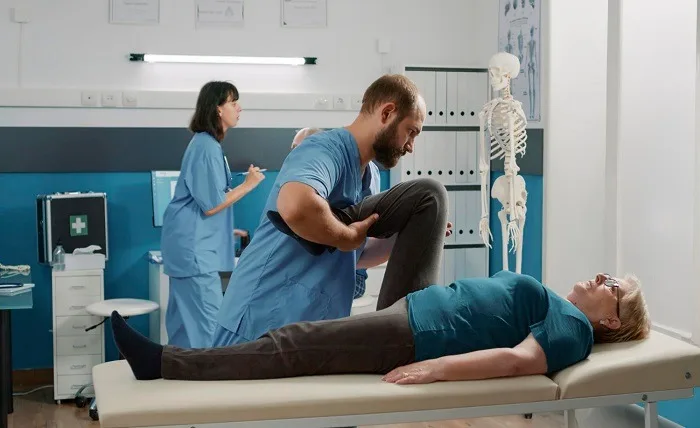The importance of preoperative exercise cannot be overstated. We will explore the science behind this concept, its benefits, and its specific application to hip replacement surgery.
Understanding Preoperative Exercise
Preoperative exercise is a structured exercise program that patients undertake before surgery. The goal is to improve the patient’s physical fitness, preparing the body to withstand the stress of surgery and the subsequent recovery period.
The role of preoperative exercise in preparing the body for surgery is multifaceted. It helps to enhance physical strength and endurance, improve cardiovascular health, and boost mental well-being. All these factors contribute to a patient’s resilience, enabling them to recover from surgery more quickly and effectively.
The Science Behind Preoperative Exercise
Preoperative exercise can significantly improve postoperative recovery. This is primarily because it enhances physical fitness, which is crucial for recovery. A study published in the American Journal of Surgery found that patients who participated in preoperative exercise programs had shorter hospital stays and were less likely to need inpatient rehabilitation.
The science behind this is clear: exercise increases blood flow, which aids in healing. Exercise has been shown to boost the immune system, which can help prevent postoperative complications such as infections.
Benefits of Preoperative Exercise
The benefits of preoperative exercise extend beyond improved postoperative recovery. Regular exercise before surgery can lead to increased muscle strength, which can help patients regain their mobility more quickly after surgery. It can also enhance flexibility, making it easier for patients to perform physical therapy exercises and daily activities post-surgery.
Moreover, preoperative exercise can improve cardiovascular health, reducing the risk of heart problems. It can also enhance mental well-being by reducing anxiety and depression, common among surgical patients. These mental health benefits can further aid recovery by improving patients’ motivation and adherence to postoperative care and rehabilitation.
Preoperative Exercise for Hip Replacement Surgery
In the context of hip replacement surgery, preoperative exercise plays a crucial role. It can help strengthen the muscles around the hip joint, improving stability and mobility after surgery. Activities such as leg lifts, knee bends, and gentle stretches can be particularly beneficial.
It can also help patients build a habit of regular exercise, which can aid in long-term recovery and overall health.
How to Implement Preoperative Exercise
Incorporating preoperative exercise into your routine is a strategic move that can significantly enhance your postoperative recovery. The process doesn’t have to be complicated or overly strenuous. The key is to start slow.
Begin with low-impact exercises, which are easier on your joints. Walking is a great starting point. It’s a natural movement that is easily incorporated into your daily routine. Aim for a brisk walk that raises your heart rate but allows you to converse. Swimming is another excellent low-impact exercise. It works out your entire body without putting undue stress on your joints.
You can gradually increase your workout intensity as your fitness improves. This could mean walking or swimming for longer periods, increasing speed, or incorporating hills into your walking routine.
Strength training exercises are another crucial component of preoperative exercise. These exercises help to build muscle strength, which can aid in recovery after surgery. For hip replacement patients, exercises that target the muscles surrounding the hip joint, such as squats, leg lifts, and hip abductions, can be particularly beneficial. These exercises improve balance and stability, which are crucial for postoperative mobility.
Flexibility exercises like gentle stretching and yoga can also be beneficial.
However, it’s important to remember that every individual is unique, and what works for one person may not work for another. Therefore, you must consult with healthcare professionals, such as your doctor or a physical therapist, before starting any exercise regimen. They can assess your current health status, consider the type of surgery you will be undergoing, and provide personalized advice. They can help you design an exercise program that is safe, effective, and tailored to your needs.
Preoperative exercise plays a crucial role in enhancing postoperative recovery. It prepares the body for the stress of surgery, improves physical fitness, and boosts mental well-being. For hip replacement patients, it can improve stability and mobility, reduce pain, and a quicker return to daily activities.
Therefore, consider incorporating preoperative exercise into your routine if you’re preparing for surgery. It could be the key to a faster and smoother recovery.
Kardiolita Hospital specializes in assisting patients from Ireland with hip replacement surgery, understand the unique needs and concerns of our Irish patients, and provides services to ensure a smooth process, from initial consultation through recovery.



